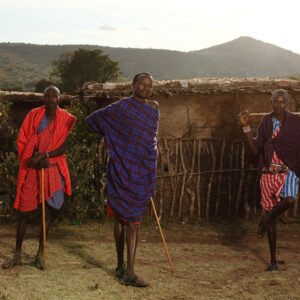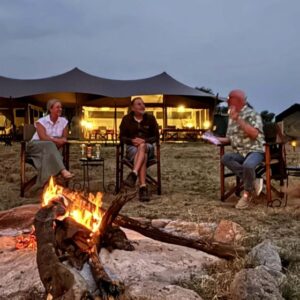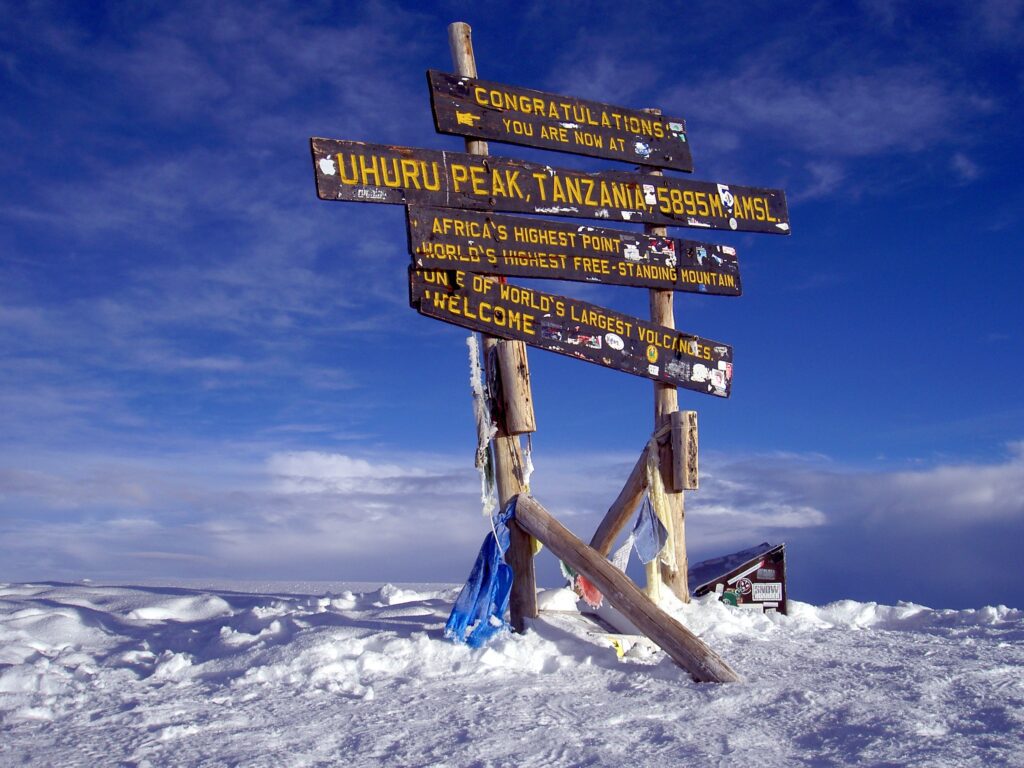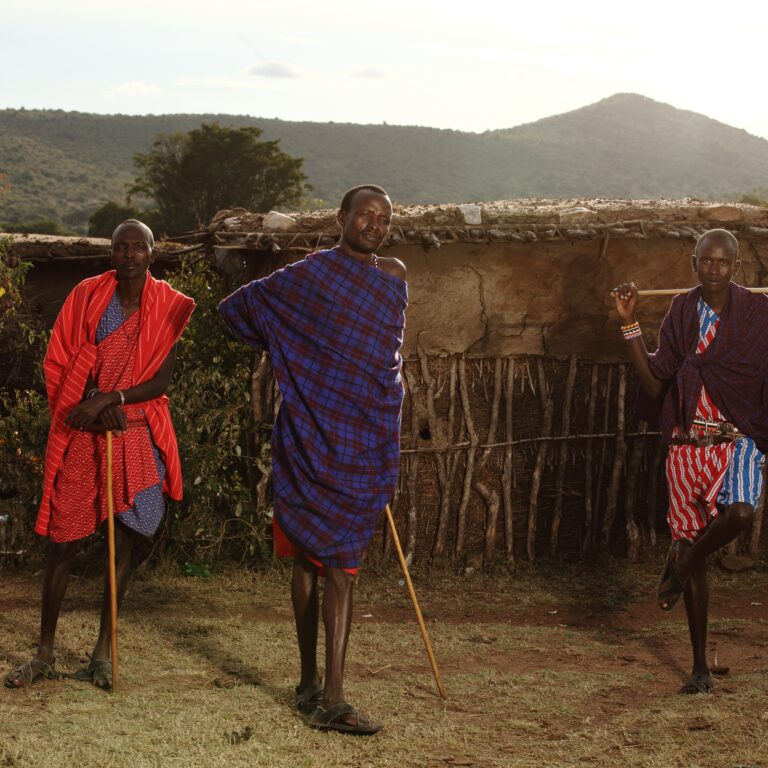Is 50 Too Old to Climb Kilimanjaro? Older Climbers Advice, Info & Tips.
For senior climbers (over 50s) planning a Mount Kilimanjaro trek, the Lemosho and Rongai routes are generally recommended due to their gradual ascent profiles and better acclimatization opportunities. The Northern Circuit route, though longer, also offers excellent acclimatization. Tour companies like Foot Slopes Tours and Safaris are known for their senior-friendly packages and focus on safety. For many adventurers, the majestic summit of Mount Kilimanjaro stands as a bucket-list destination. Rising 19,341 feet above sea level, Africa’s highest peak offers breathtaking views and the chance to experience diverse ecosystems. However, if you’re over 50, the prospect of climbing Kilimanjaro may seem daunting. Yet, with the right preparation and mindset, this adventure can be incredibly fulfilling, serving as a testament to one’s resilience and spirit.
Kilimanjaro is no ordinary trek; it presents challenges that require physical endurance, mental fortitude, and careful planning. As we age, our bodies may become more susceptible to altitude sickness and fatigue, but that doesn’t mean the dream of reaching Uhuru Peak can’t become a reality. Many climbers over 50 find that they are more equipped than younger adventurers, having developed a wealth of life experience and perseverance
1. Choosing the Best Kilimanjaro Route for Older Climbers
For those over 50, it’s wise to select a longer route, like the Lemosho or Machame routes, which allow for a slower ascent for the best tours of Mount Kilimanjaro for Seniors and over 50s. This helps your body acclimate to the high altitude gradually, reducing the risk of altitude sickness. The longer itineraries also provide ample opportunities to enjoy the breathtaking scenery and diverse ecosystems as you ascend. Taking your time on the mountain can enhance your experience, ensuring you soak in the beauty around you without feeling rushed. Check out 10 Tips For A Successful Climb On Mount Kilimanjaro.
Route selection is critical. Those over 50 benefit from routes with gradual ascents, longer durations, and good acclimatization profiles.
 Lemosho Route (8–9 Days). Best choice for older climbers. Offers a scenic, gradual ascent through rainforests and alpine deserts. High success rate due to excellent acclimatization time.
Lemosho Route (8–9 Days). Best choice for older climbers. Offers a scenic, gradual ascent through rainforests and alpine deserts. High success rate due to excellent acclimatization time.
 Machame Route (7 Days). Known as the “Whiskey Route,” it provides excellent scenery and a steady climb. Though steeper than Lemosho, it offers good altitude conditioning with built-in acclimatization days.
Machame Route (7 Days). Known as the “Whiskey Route,” it provides excellent scenery and a steady climb. Though steeper than Lemosho, it offers good altitude conditioning with built-in acclimatization days.
 Rongai Route (6–7 Days). Approaches from the north, less crowded and with gentler gradients. Ideal for those seeking solitude and a more peaceful trek.
Rongai Route (6–7 Days). Approaches from the north, less crowded and with gentler gradients. Ideal for those seeking solitude and a more peaceful trek.
 Avoid Short Routes (Marangu, Umbwe). Shorter routes increase the risk of Acute Mountain Sickness (AMS). The Umbwe Route is particularly steep, while Marangu, though popular, allows less acclimatization time.
Avoid Short Routes (Marangu, Umbwe). Shorter routes increase the risk of Acute Mountain Sickness (AMS). The Umbwe Route is particularly steep, while Marangu, though popular, allows less acclimatization time.
2. Consider Getting Medical Insurance
Before embarking on your Kilimanjaro adventure, assessing your health is crucial. Consult your physician about your fitness level and whether you’re healthy enough to take on this challenge. A thorough health checkup will help identify any potential issues that could arise during the climb. Moreover, securing medical insurance that covers high-altitude trekking is essential. This peace of mind allows you to focus on your climb, knowing you’re safeguarded against unforeseen medical emergencies.
3. Choose Gear and Clothes Wisely
Selecting the right gear and clothing is vital for your comfort and safety while climbing Kilimanjaro. Invest in high-quality, moisture-wicking base layers, insulating mid-layers, and breathable outer layers to protect against changing weather conditions. Proper hiking boots, broken in before the trek, are essential to prevent blisters. Don’t forget accessories such as gloves, hats, and gaiters. The right gear can make a significant difference in your experience, allowing you to focus on the journey instead of discomfort.
4. Invest in a Good Headlamp
Summit night typically starts around midnight, which means trekking in the dark. A reliable headlamp is an essential piece of equipment that not only illuminates the trail but also leaves your hands free for climbing. Choose a lightweight model with adjustable brightness settings, and make sure it’s equipped with fresh batteries. This simple investment can boost your confidence and safety as you navigate the rocky terrain in the early hours.
5. 50-Year-Olds and Kilimanjaro Training
Physical preparation is crucial for climbers of all ages, anyone considering this climb, especially those over 50. Begin by consulting with a healthcare professional to assess your fitness level. Begin training at least a few months before your climb, incorporating long hikes with a weighted backpack to simulate the trek. Building stamina and strength not only prepares your body but also bolsters your confidence as you face the slopes of Kilimanjaro. From there, start a training regimen that includes cardiovascular exercises, strength training, and flexibility workouts. Hiking, especially at elevated altitudes, should feature heavily in your routine.
Prioritize getting outside and hiking on varied terrains; this will help acclimate your body to elevation changes. Don’t forget about mental preparation. Climbing Kilimanjaro is as much a mental challenge as it is physical, requiring determination and a positive attitude. Engaging in mindfulness practices, such as meditation or yoga, can boost your ability to handle the stress of the climb.
Successfully climbing Kilimanjaro isn’t about youth—it’s about preparation. As we age, muscle mass declines and cardiovascular recovery slows, but with targeted training, older climbers often outperform their younger counterparts in endurance and discipline.
 Cardio Conditioning for Endurance Cardiovascular fitness is the cornerstone of your Kilimanjaro training. We recommend. Hiking long distances (10+ miles) with a backpack weighing 15–20 lbs. Stair climbing or hill walking at least 3 times a week. Interval training to increase lung capacity. Building stamina takes time, so begin at least 4–6 months prior to your climb.
Cardio Conditioning for Endurance Cardiovascular fitness is the cornerstone of your Kilimanjaro training. We recommend. Hiking long distances (10+ miles) with a backpack weighing 15–20 lbs. Stair climbing or hill walking at least 3 times a week. Interval training to increase lung capacity. Building stamina takes time, so begin at least 4–6 months prior to your climb.
 Strength Training Focused on Core and Legs. Strong muscles are essential for both ascent and descent, especially in the knees, hips, and lower back. Prioritize. Squats, lunges, and step-ups for the lower body. Planks and yoga for core stability and flexibility. Use light weights or resistance bands for joint-friendly strength development. Climbing Mount Kilimanjaro as a senior (over 50) is absolutely possible and can be an incredibly rewarding experience!
Strength Training Focused on Core and Legs. Strong muscles are essential for both ascent and descent, especially in the knees, hips, and lower back. Prioritize. Squats, lunges, and step-ups for the lower body. Planks and yoga for core stability and flexibility. Use light weights or resistance bands for joint-friendly strength development. Climbing Mount Kilimanjaro as a senior (over 50) is absolutely possible and can be an incredibly rewarding experience!
 Altitude Simulation for Acclimatization. If you can train at high elevations, do so. Otherwise, invest in. Hypoxic masks to simulate high-altitude breathing. Sleeping at moderate altitudes (if living near mountains). Frequent weekend hikes at increasing elevations.
Altitude Simulation for Acclimatization. If you can train at high elevations, do so. Otherwise, invest in. Hypoxic masks to simulate high-altitude breathing. Sleeping at moderate altitudes (if living near mountains). Frequent weekend hikes at increasing elevations.
6. Mental Preparation for Summit Night
Climbing Kilimanjaro isn’t just a physical challenge; it’s a mental one too. Summit night can test your limits, pushing you through fatigue and discomfort. It’s essential to prepare mentally for this part of the trek. Visualization techniques, mindfulness, and positive affirmations can help you maintain focus and motivation. Create a mental mantra that resonates with your goal, reminding yourself of why you embarked on this journey.
Many climbers turn back on summit night not due to physical failure, but mental fatigue. Be ready for the toughest part of the trek.
 Break the Challenge into Steps. Focus only on the next step, the next breath. Don’t get overwhelmed by how far the summit seems.
Break the Challenge into Steps. Focus only on the next step, the next breath. Don’t get overwhelmed by how far the summit seems.
 Stay Positive and Present. Your mindset is your strongest weapon. Repeat mantras, listen to your breath, and stay rooted in the moment. Doubt is your biggest enemy at altitude.
Stay Positive and Present. Your mindset is your strongest weapon. Repeat mantras, listen to your breath, and stay rooted in the moment. Doubt is your biggest enemy at altitude.
 Trust Your Guides. Your guides know the mountain. They’ll read your condition, adjust your pace, and give you advice. Follow their lead—they’ve helped hundreds summit safely.
Trust Your Guides. Your guides know the mountain. They’ll read your condition, adjust your pace, and give you advice. Follow their lead—they’ve helped hundreds summit safely.
7. Experience and Patience
Embrace the journey and understand that climbing Kilimanjaro is as much about the experience as it is about reaching the summit. Open your heart to the sights and sounds, the camaraderie of fellow climbers, and the wisdom of your guides. Cultivating patience is key; the mountain does not rush, and neither should you. Celebrate small milestones along the way, cherishing each moment as you ascend. Check out Can Anyone Climb Mount Kilimanjaro?
 Medical check-up. It’s highly recommended that older climbers get a medical check-up before the climb to ensure there are no underlying health issues that might affect their ability to climb.
Medical check-up. It’s highly recommended that older climbers get a medical check-up before the climb to ensure there are no underlying health issues that might affect their ability to climb.
 Slower ascent. Older climbers may find it beneficial to climb at a slightly slower pace and take more frequent rest breaks to allow their bodies to acclimatize to the altitude, according to Foot Slopes Tours and Safaris. A good physical conditioning program, proper acclimatization to the altitude, and choosing a route that matches your fitness level are crucial for a safe and enjoyable climb.
Slower ascent. Older climbers may find it beneficial to climb at a slightly slower pace and take more frequent rest breaks to allow their bodies to acclimatize to the altitude, according to Foot Slopes Tours and Safaris. A good physical conditioning program, proper acclimatization to the altitude, and choosing a route that matches your fitness level are crucial for a safe and enjoyable climb.
 Altitude sickness. Altitude sickness can be a concern for all climbers, including older individuals. Proper acclimatization, including gradual elevation gain and sufficient rest periods, is essential. Many older individuals have successfully reached the summit, demonstrating that age is not a barrier for those who are well-prepared.
Altitude sickness. Altitude sickness can be a concern for all climbers, including older individuals. Proper acclimatization, including gradual elevation gain and sufficient rest periods, is essential. Many older individuals have successfully reached the summit, demonstrating that age is not a barrier for those who are well-prepared.
8. Stay Hydrated and Nourished
Hydration and nutrition are critical to your success on Kilimanjaro. Aim to drink plenty of water throughout your climb to maintain your energy levels and prevent altitude sickness. Pack nutrient-dense snacks like nuts, energy bars, and dried fruits to keep your energy up while trekking. Balanced meals provided by your trekking company will help sustain you, but having a few personal snacks can be a morale booster along the way. Altitude affects everyone differently, but older climbers are often more disciplined about managing it wisely.
 Go Slow – “Pole Pole. The Swahili mantra “Pole Pole” (slowly, slowly) is your best friend. Move at a slow, steady pace from day one to give your body time to adjust.
Go Slow – “Pole Pole. The Swahili mantra “Pole Pole” (slowly, slowly) is your best friend. Move at a slow, steady pace from day one to give your body time to adjust.
 Hydrate Aggressively. Drink at least 4–5 liters of water daily. Staying hydrated aids circulation, improves oxygen uptake, and reduces the risk of altitude sickness.
Hydrate Aggressively. Drink at least 4–5 liters of water daily. Staying hydrated aids circulation, improves oxygen uptake, and reduces the risk of altitude sickness.
 Consider Diamox (Acetazolamide). Many over-50 climbers use Diamox as a preventive measure. It assists breathing and speeds up acclimatization. Consult your doctor before using it, especially if on medication for blood pressure or other age-related conditions.
Consider Diamox (Acetazolamide). Many over-50 climbers use Diamox as a preventive measure. It assists breathing and speeds up acclimatization. Consult your doctor before using it, especially if on medication for blood pressure or other age-related conditions.
 Choose Itineraries with Built-in Acclimatization. Longer treks (7+ days) allow your body to gradually adapt to elevation, significantly increasing your summit success rate.
Choose Itineraries with Built-in Acclimatization. Longer treks (7+ days) allow your body to gradually adapt to elevation, significantly increasing your summit success rate.
9. Selecting a Guiding Service
Choosing a reliable and experienced guiding service is essential for a successful ascent. Look for companies that have expertise in catering to older climbers and offer personalized support. A good team can significantly enhance your experience, providing assistance in maintaining pace and addressing any medical concerns.
Inspirational Success Stories: It’s Never Too Late
If you’re over 50 and questioning whether you can summit, consider the following stories that defy age: Numerous companies specialize in treks for older adults, catering to their needs and ensuring a safe and enjoyable experience. Remember: Age is a mindset, not a limitation. With careful planning, dedicated training, and the right support, you can turn your Kilimanjaro dream into a reality, proving that conquering mountains, like conquering age, is all about the heart and spirit. So, lace up your boots, train hard, and get ready to embark on an unforgettable adventure!
 Anne Lorimor – Summited at 89. The oldest woman to reach the summit. Her secret? Positive attitude, steady pace, and no shortcuts in preparation.
Anne Lorimor – Summited at 89. The oldest woman to reach the summit. Her secret? Positive attitude, steady pace, and no shortcuts in preparation.
 Fred Distelhorst – Summited at 88. Former dentist and WWII veteran. Summited with his granddaughter, proving that family motivation and thorough training can conquer even the tallest of peaks.
Fred Distelhorst – Summited at 88. Former dentist and WWII veteran. Summited with his granddaughter, proving that family motivation and thorough training can conquer even the tallest of peaks.
 Countless Others, Every Year. Tens of climbers in their 50s, 60s, and 70s summit Kilimanjaro annually. With the right training, support, and mindset, your age becomes your strength, not your limitation.
Countless Others, Every Year. Tens of climbers in their 50s, 60s, and 70s summit Kilimanjaro annually. With the right training, support, and mindset, your age becomes your strength, not your limitation.
Climbing Kilimanjaro Over 50: Your FAQs Answered
Climbing Mount Kilimanjaro, the highest peak in Africa, is a breathtaking challenge that attracts adventurers from around the globe. For those over 50, the prospect of scaling this iconic mountain can stir up both excitement and concern. Here are some frequently asked questions that provide insights and guidance for climbers in this age group.

 Lemosho Route (8–9 Days). Best choice for older climbers. Offers a scenic, gradual ascent through rainforests and alpine deserts. High success rate due to excellent acclimatization time.
Lemosho Route (8–9 Days). Best choice for older climbers. Offers a scenic, gradual ascent through rainforests and alpine deserts. High success rate due to excellent acclimatization time. Avoid Short Routes (Marangu, Umbwe). Shorter routes increase the risk of Acute Mountain Sickness (AMS). The Umbwe Route is particularly steep, while Marangu, though popular, allows less acclimatization time.
Avoid Short Routes (Marangu, Umbwe). Shorter routes increase the risk of Acute Mountain Sickness (AMS). The Umbwe Route is particularly steep, while Marangu, though popular, allows less acclimatization time. Cardio Conditioning for Endurance Cardiovascular fitness is the cornerstone of your Kilimanjaro training. We recommend. Hiking long distances (10+ miles) with a backpack weighing 15–20 lbs. Stair climbing or hill walking at least 3 times a week. Interval training to increase lung capacity. Building stamina takes time, so begin at least 4–6 months prior to your climb.
Cardio Conditioning for Endurance Cardiovascular fitness is the cornerstone of your Kilimanjaro training. We recommend. Hiking long distances (10+ miles) with a backpack weighing 15–20 lbs. Stair climbing or hill walking at least 3 times a week. Interval training to increase lung capacity. Building stamina takes time, so begin at least 4–6 months prior to your climb.






